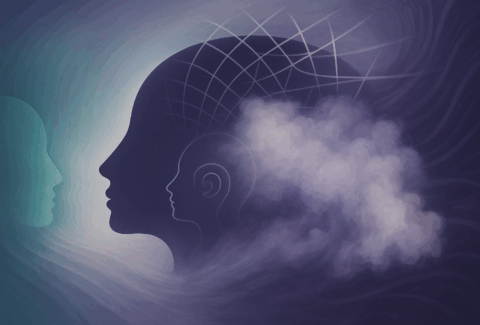Unconscious Drivers of Guilt: Unraveling the Complexities of Emotional Experience
Guilt[1] is an intricate emotion that often arises from a clash between our actions, beliefs, and expectations. While many factors contribute to feelings of guilt, a significant portion stems from unconscious drives that shape our thoughts and behaviors. Understanding these unconscious drivers can illuminate the complex dynamics of guilt and facilitate healthier emotional processing.[2] This article delves into the unconscious mechanisms behind guilt, supported by empirical research.
Psychoanalytic Perspectives
Psychoanalytic theories suggest that guilt is deeply rooted in the unconscious mind. Sigmund Freud[3] posited that guilt arises from the conflict between the id, ego, and superego. The superego, which internalizes societal norms and moral standards, often generates feelings of guilt when the ego fails to align with these standards. According to this framework, unconscious desires, or impulses—particularly those deemed socially unacceptable—can lead to guilt when they surface or are acted upon.[4]
Implication:
Recognizing the influence of the superego on feelings of guilt can help individuals understand the origins of their emotions. This awareness may lead to healthier coping strategies and a re-evaluation of their moral framework.
Cognitive Dissonance
Cognitive dissonance theory[5] posits that individuals experience discomfort when their beliefs and behaviors are inconsistent. This dissonance can lead to feelings of guilt, particularly when individuals recognize that their actions contradict their moral or ethical standards.[6] For instance, a person may feel guilty for lying to a friend, as this action conflicts with their belief in honesty.
Implication:
Understanding cognitive dissonance can encourage individuals to reflect on their values and beliefs. Addressing the inconsistency between actions and morals can alleviate guilt and promote psychological well-being.
Fear of Rejection and Abandonment
Unconscious fears related to rejection and abandonment can also drive feelings of guilt. Individuals may feel guilty when they believe their actions will result in disapproval or distance from loved ones.[7] According to attachment theory, secure attachments foster emotional resilience, while insecure attachments can lead to heightened sensitivity to guilt (Bowlby, 1969). Those with anxious attachment styles may be particularly prone to guilt when they perceive a threat to their relationships.
Implication:
Awareness of attachment styles can help individuals identify patterns in their emotional responses. By cultivating secure attachments and open communication, individuals can mitigate guilt arising from fear of rejection.
Internalized Societal Norms
Societal expectations and cultural norms significantly influence feelings of guilt. Individuals often internalize these norms[8], leading to guilt when they perceive themselves as falling short of societal standards. For example, a person may feel guilty for prioritizing personal desires over familial obligations, reflecting broader cultural values regarding duty and responsibility.
Implication:
Recognizing the role of societal norms in shaping guilt can empower individuals to challenge unrealistic expectations. This awareness can facilitate personal growth and self-acceptance by allowing individuals to prioritize their values over external pressures.
Past Experiences and Conditioning
Unconscious drives of guilt can also stem from past experiences[9] and conditioning. Early life experiences, particularly those involving critical caregivers or punitive environments, can create a predisposition to guilt. Individuals who were frequently shamed or punished for mistakes may internalize these experiences, leading to an ongoing sense of guilt in adulthood.
Implication:
Understanding the roots of guilt in past experiences can inform therapeutic interventions. Therapeutic approaches, such as cognitive-behavioral therapy (CBT) or psychodynamic therapy, can help individuals process these experiences and develop healthier emotional responses.
Conclusion
The unconscious drivers of guilt are multifaceted, encompassing psychoanalytic influences, cognitive dissonance, fears of rejection, internalized societal norms, and past conditioning. By recognizing these unconscious mechanisms, individuals can gain insight into their emotional experiences and work toward healthier coping strategies. This understanding not only alleviates guilt but also fosters personal growth and emotional resilience.
[1] Tilghman-Osborne, Carlos, David A. Cole, and Julia W. Felton. “Definition and measurement of guilt: Implications for clinical research and practice.” Clinical psychology review 30.5 (2010): 536-546.
[2] English, Fanita. “Unconscious drives reimagined.” Transactional Analysis Journal 38.3 (2008): 238-246.
[3] Westerink, Herman. A dark trace: Sigmund Freud on the sense of guilt. Leuven University Press, 2021.
[4] Carveth, Donald L. The still small voice: Psychoanalytic reflections on guilt and conscience. Routledge, 2018.
[5] Vaidis, David. Cognitive dissonance theory. London: Oxford University Press, 2014.
[6] Stice, Eric. “The similarities between cognitive dissonance and guilt: Confession as a relief of dissonance.” Current Psychology 11 (1992): 69-77.
[7] Caculidis-Tudor, Denisa, et al. “The less I get, the more I punish: A moderated-mediation model of rejection sensitivity and guilt in depression.” Current Psychology (2021): 1-13.
[8] Danilov, Anastasia, Kiryl Khalmetski, and Dirk Sliwka. Norms and guilt. No. 6999. CESifo Working Paper, 2018.
[9] Choi, Hyeman. “Integrating Guilt and Shame into the Self-Concept: The Influence of Future Opportunities.” Behavioral Sciences 14.6 (2024): 472.







